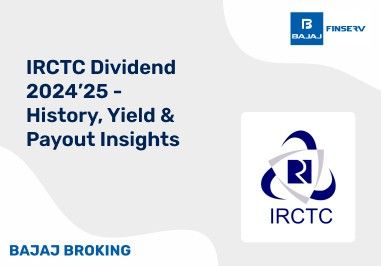A Consolidated Account Statement (CAS) provides a comprehensive view of an investor's transactions across various financial instruments, particularly in mutual funds. Understanding what is CAS and its significance is crucial for effective investment management. The consolidated account statement meaning refers to a detailed report summarising all investments, including their net asset value. This document helps investors track their portfolios efficiently, reducing the need to manage multiple statements. To get started with investments, one must open Demat account, which facilitates the seamless management of assets, including mutual funds.
What is CAS (Consolidated Account Statement)?
A Consolidated Account Statement (CAS) is a comprehensive document that consolidates all transactions related to an investor's mutual funds and depository accounts into a single statement. This enables investors to easily monitor their investments and track their financial performance. The consolidated account statement meaning highlights its role in simplifying investment management by providing a clear overview of holdings and transactions. CAS is generated monthly and is delivered via email or as a hard copy upon request, ensuring investors have access to their financial information whenever needed.
The CAS full form in mutual funds refers to its significance in the investment landscape, particularly in India. It offers investors a systematic approach to managing their mutual fund portfolios by detailing each transaction, including purchases, sales, dividends and bonus allocations. This transparency allows investors to evaluate their investments against the net asset value (NAV) of their mutual funds, enabling informed financial decisions. By understanding what is CAS, investors can efficiently track their investments and make adjustments as needed.
How Does Consolidated Account Statement Work?
The Consolidated Account Statement (CAS) plays a pivotal role in simplifying investment management for individuals. Essentially, it compiles transaction data across various Asset Management Companies (AMCs) linked to an investor's Permanent Account Number (PAN). Understanding what is CAS is crucial, as it provides a comprehensive overview of all financial activities related to mutual funds. The consolidated account statement meaning lies in its ability to present a summary of transactions, eliminating the need for multiple statements from different AMCs.
Investors receive a monthly CAS, which highlights gains, losses and overall performance metrics for each investment. By tracking the net asset value (NAV) fluctuations, investors can assess their portfolios' health and make informed adjustments. The streamlined nature of the CAS simplifies tracking and analysis, presenting all relevant financial information in one place.
Additionally, the CAS aids in tax planning by offering a detailed transaction history, making it easier for investors to prepare tax returns and ensure compliance with regulations. Thus, the CAS full form in mutual funds reflects its significance as an essential tool for effective investment management and financial planning. To begin benefiting from a CAS, one must open Demat account.
Types of Consolidated Account Statement
Understanding the various types of Consolidated Account Statements (CAS) is essential for effective financial management. Each type serves a unique purpose in managing investments and obligations.
Callable Bond Sinking Fund
A Callable Bond Sinking Fund allows companies to repurchase bonds at a predetermined call price, enhancing financial flexibility and potentially reducing interest expenses over time by managing debt efficiently.
Specific Purpose Sinking Fund
A Specific Purpose Sinking Fund is established for targeted objectives, such as purchasing equipment or making capital improvements, ensuring that the necessary resources are readily available for the intended purpose.
Regular Payment Sinking Fund
A Regular Payment Sinking Fund facilitates ongoing payments, like interest to bondholders or trustee fees, ensuring timely disbursement of required payments without straining the organisation's financial resources.
Purchase Back Sinking Fund
A Purchase Back Sinking Fund allows a company to repurchase its bonds at either market value or sinking fund prices, providing flexibility in capital management and helping to maintain optimal debt levels.
Features of Consolidated Account Statement
The Consolidated Account Statement (CAS) offers several features that enhance the overall investment experience, providing investors with a streamlined approach to manage and monitor their financial assets effectively.
Planned Contributions
Regular, systematic contributions within the consolidated account statement framework ensure that funds are readily available when needed. This proactive approach aids in financial planning and mitigates unexpected shortfalls.
Financial Security
The CAS provides a financial cushion, reducing the risk of default on payments. This security is vital for maintaining investor confidence, especially during challenging economic periods, ensuring smooth operational continuity.
Investment Options
Funds within a consolidated account statement can be allocated to low-risk assets, allowing investors to earn returns while simultaneously accumulating capital. This balance helps preserve capital while generating income over time.
Transparency
Clear documentation and planning within the CAS enhance accountability in financial management. This transparency is essential for building trust with investors, as it allows for easy verification of all transactions and holdings.
Ease of Use
The consolidated format of a consolidated account statement simplifies investment tracking. It allows for easier monitoring of portfolio performance across various accounts, making it straightforward for investors to assess their financial health.
Advantages of Consolidated Account Statement
The Consolidated Account Statement (CAS) provides numerous advantages that streamline investment management and enhance overall financial oversight. These benefits are essential for both novice and experienced investors in navigating their portfolios. Understanding the consolidated account statement meaning empowers investors to optimise their strategies and stay on top of their financial goals.
Reliable Accuracy
The accuracy of CAS is vital for informed investment decisions. The registrar and transfer agent (RTA) meticulously compile and verify transaction details, ensuring investors receive precise information for effective portfolio management.
Enhanced Transparency
CAS enhances transparency by documenting all transactions in detail. This allows investors to verify their investment activities and ensures compliance with regulations set by SEBI, fostering trust in financial reporting.
Tax Planning Assistance
A consolidated account statement simplifies tax planning by offering a consolidated view of investments. This comprehensive overview helps investors effectively manage their tax obligations and strategise for future investments with confidence.
Efficiency in Management
With all investment details consolidated into one statement, CAS significantly enhances management efficiency. This saves time and effort for investors, allowing for more straightforward tracking of their portfolios and informed decision-making.
Streamlined Investment Monitoring
Investors can easily monitor their portfolios through CAS, ensuring they have up-to-date information on all holdings. This timely access to information aids in making prompt decisions, optimising overall investment strategies.
Disadvantages of Consolidated Account Statement
While the Consolidated Account Statement (CAS) offers various benefits, it also has its drawbacks that investors should consider. Understanding these disadvantages can help investors make informed decisions about their financial management. Knowing the consolidated account statement meaning is essential for evaluating its usefulness versus its limitations.
Duration Limits
The limited availability of CAS, restricted to six months, can pose challenges for investors needing to track long-term performance or historical data for financial analysis. This limitation may hinder effective portfolio assessment.
Readability Issues
The complexity of CAS may overwhelm investors with large portfolios, making it difficult to extract critical information efficiently. Navigating through extensive details can lead to confusion, affecting decision-making processes.
Privacy Risks
With sensitive information included in the consolidated account statement, investors must safeguard their statements to prevent potential data breaches and protect their privacy. Ensuring security measures are in place is crucial for financial safety.
Reliance on RTA
Investors depend on the efficiency of the registrar and transfer agent (RTA) for accurate and timely CAS preparation, introducing a level of uncertainty. Delays or errors from the RTA can disrupt financial planning.
Examples of Consolidated Account Statement
An example of a Consolidated Account Statement (CAS) illustrates its functionality in real-world investment scenarios. Consider an investor who holds multiple mutual funds and depository accounts. Their CAS will display all transactions, including purchases, sales, dividends and transfers, offering a comprehensive view of their investment activities. This consolidated approach simplifies tracking performance across different asset classes, ensuring the investor remains well-informed about their financial standing. For instance, an investor may notice a particular mutual fund performing exceptionally well compared to others, prompting them to adjust their portfolio accordingly. Overall, CAS serves as an essential tool, enhancing investment oversight and facilitating better decision-making.














